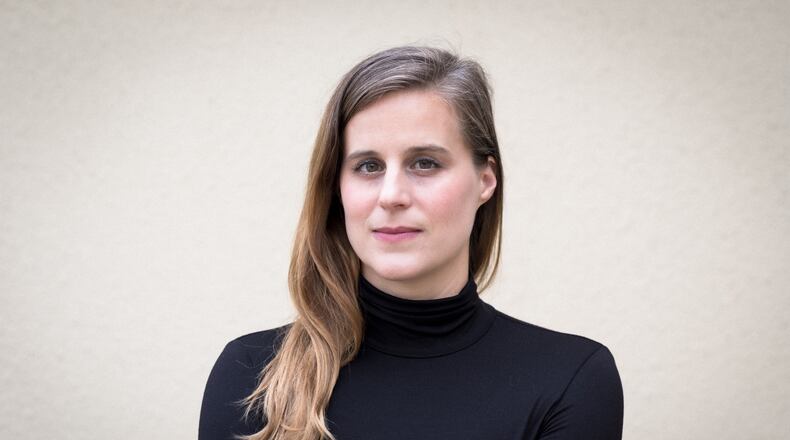Biology demands that women produce offspring in order to sustain the species. Throughout history, childbearing has been job No. 1 for women. It’s only in the last 60 years, since the dawn of the birth control pill, that women have been able to selectively reproduce with ease. In that short time span, relatively speaking, women have made tremendous advances in positions of power in government, academia, business and the sciences.
In her fascinating and brilliant new novel “Matrix,” written in language that consistently enthralls, “Fates and Furies” author Lauren Groff examines the obstacles and benefits of female empowerment and its intrinsic connection to reproduction by spinning a captivating tale about a 12th-century nun living in England.
Groff acknowledges the quintessential power of womankind to propagate the species and never wavers in her reverence for religion, marriage or family. But her real focus here is what women can accomplish when they take a different path.
Marie is an illegitimate, orphaned child of royalty who enjoys a few years of the good life in the court of France after her mother dies. But she grows into “a giantess of a maiden” with a face that “holds no beauty, only canniness and passion yet unchecked.” Deemed unmarriageable by Queen Eleanor, Marie is sent to an impoverished abbey in England where the nuns are starving to death. There Marie is to serve as prioress, second in command to the abbess.
When she enters the abbey, Marie is not particularly pious. “(T)he religion she was raised in had always seemed vaguely foolish to her, if rich with mystery and ceremony…” But she soon recognizes the power of prayer, which is often sung at the abbey.
Initially she hatches a plan to get Queen Eleanor, for whom Marie harbors a deep and abiding love, to reverse her decision. Marie writes a series of poems and has them delivered to the court, but her effort elicits no response. Rebuffed but emboldened, Marie decides to “mold herself in the queen’s form” by creating “walls around walls around herself, walls of wealth and blood and marriages, friends and spies and advisers.”
She begins by teaching the nuns to fish, planting an apricot orchard, launching a service of scribes for hire and demanding long-overdue rents from freeloaders living on the abbey’s land. Eventually, Marie is promoted to abbess.
Over time, the abbey of 20 dying nuns flourishes to 100-plus nuns who transform “from pitiful skeletons to gamboling like spring lambs.” And in the process, Marie’s faith “has grown upon her. Perhaps, she thinks, it is something like mold.” But it’s not until Marie reaches middle age, when “the curse of Eve” and “the heat of the end of her menses had withdrawn,” that her transfiguration is complete and she begins to have visions of the Virgin Mary.
Marie is not devoid of earthly concerns, though. Occasionally she engages in sexual relations with a sister for purely medicinal reasons, and as her wealth and influence grow, so does her ego. Marie’s pride and quest for authority in a world where women can only advance so far threaten to destroy the isolated, female-only world she has so carefully constructed for herself and her sisters, whom she has grown to love as though they were her children.
Marie singles out Mary Magdalene, the patron saint of women, as her favorite saint. And she prays to the Virgin Mary, who provides divine guidance. But it is Eve, the original free-thinker, with whom Marie is most aligned. Prompted by one of her visions, Marie transforms the abbey into a second Eden — an “island of women” sealed off from the world by an impregnable labyrinth that protects the abbey from the serpent of corruption.
When they finally meet again, many years after Marie’s banishment, Queen Eleanor comes bearing two gifts. One is a solid copper staff engraved with the Garden of Eden filigreed in gold. The second one is a wax seal stamp of Marie’s image, haloed and holding a book. Its significance is profound. It is proof that Eleanor does in fact see Marie as she is, a woman of passion and substance, and it commands a response with its inscription: “I write.” Through letters, the women’s friendship deepens.
Over the course of her long life, Marie’s accomplishments prove monumental, and countless lives are improved as a result. Her reputation is well known across the land. Cecily, Marie’s maid from the French court who returns to Marie in her waning years, points out the irony of the nun’s life: “(H)ad Marie been beautiful … she would have been married off, she would likely be long dead of childbirth and all that would be left of her in the world would be some daughter, a minor noble, so busy she’d hardly remember the lines of her mother’s face. In fact, Cecily says, it was Marie’s unbeauty that was the making of her.”
The word matrix has multiple meanings, all of which apply here. It is a set of circumstances from which something else evolves. And it is the seal used to make a wax stamp on letters, like the one given to Marie by Queen Eleanor. In Latin, it means mother. But in its most archaic usage, it means womb — the source of womankind’s power and the key to her destiny. The battle for control of it, Groff seems to say, is worthy of waging.
FICTION
By Lauren Groff
Riverhead Books
272 pages, $28
About the Author
The Latest
Featured


